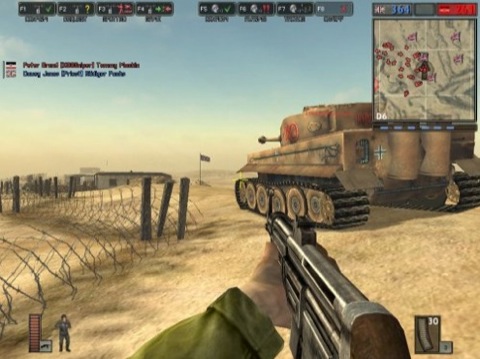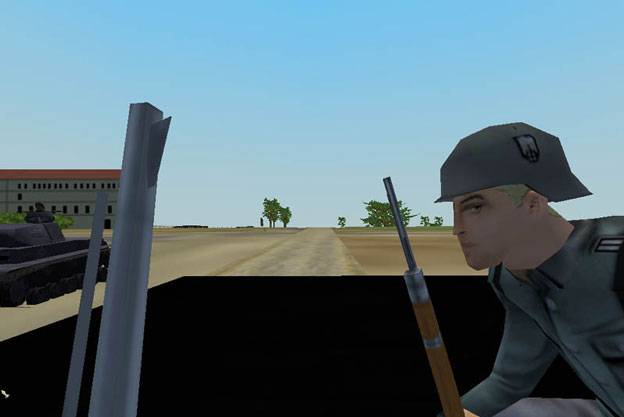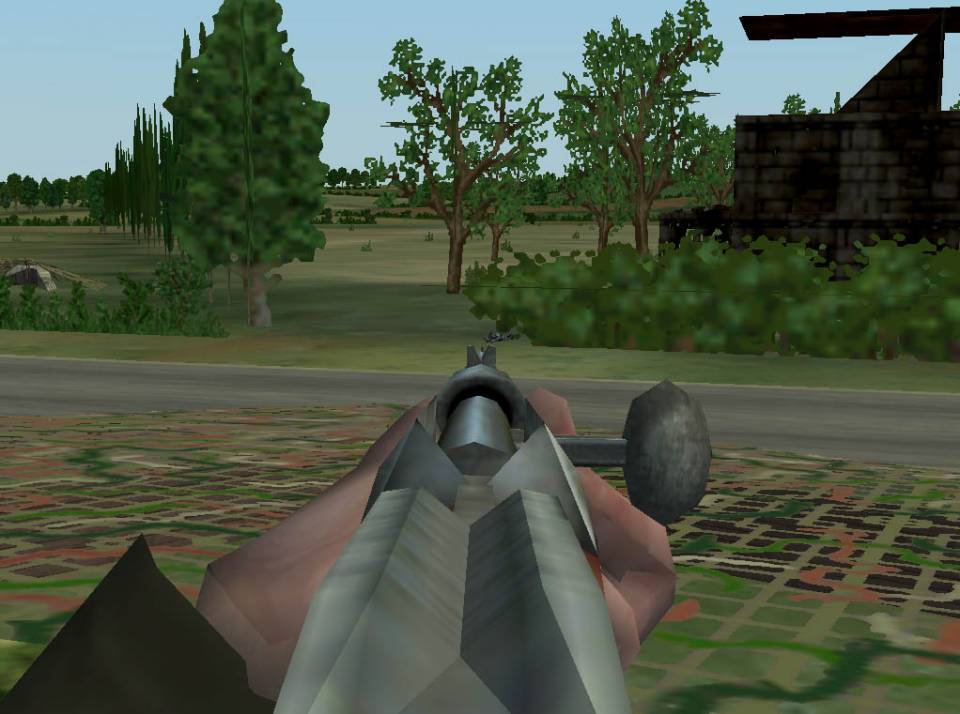Are Truly "Massive" MMOFPSs not just viable, but even necessary?
By officermeatbeef 5 Comments
Howdy, some of you might remember me as the guy Ryan yelled at during the End of Star Wars Galaxies gala. While I can't exactly say that went... quite as well as I hoped (for my thoughts/apologies/lessons learned from the experience, check my posts in this thread), I'm glad people were entertained by the responses to my poor performance and appreciate that the guys still discussed my question thoughtfully and considerately, even if I didn't necessarily get my point across as well as I'd hoped.
Anyway, now that I've had some time to reflect on the whole thing in a less-pressured situation, I'm finding that the ideas which caused me to pose the question on the show (the title of this post, more or less) are still swirling in my head, so why not put up the arguments I was hoping to get across then here where people can read and respond at their leisure? Hopefully, a bit more coherently, because gosh that would be nice.
To build on the preamble that invited Ryan's wrath on the show: I love FPS games that are small, quick and chaotic, and ones that are huge, slow, and deliberately tactical, and any combination in between. I also love FPS games with large scale and huge player counts, and have since the first multiplayer online PC FPSs started to feature the unimaginable sums of 32 or even 64 players in a single match! Of course, for most of those (relatively) early FPSs with their emphasis on fast action and limitation on map sizes, all those extra people generally just meant you killed or were killed by other players every 5 seconds, instead of every 10. Crazy, chaotic fun for sure, but perhaps not quite doing justice to all those extra people.
For me, it took games like the original Operation Flashpoint (which I basically never even tried to play online, for whatever reason) or Battlefield 1942 (which I definitely did) to reveal the possibilities those large player counts could provide.My system/connection could barely handle BF1942 at even 32 players for a good amount of my career in it, but I still couldn't stay away from those crazy 64-player servers, even though it meant a good 20 minutes of chugging at least as my piddly insufficient RAM was overburdened by all those dudes running and driving and flying and sailing around.

Yet as much as I had always loved the idea of games with MASSIVE player counts, I still have little to no experience with MMOs of any sort. Originally, this was due primarily to being too poor to deal with a monthly subscription fee; nowadays, it's more just that none of them really seem to appeal to me. Many of my reasons jibe with those Jeff gives in his most recent Jar Time; not really wanting to devote all my time to a single game, the necessity of grouping/scheduling, etc. Plus I hate grinding. I hate grinding so much. Sooooo much. But a FIRST PERSON SHOOTER that was also an MMO... surely that would eliminate most of my problems with the concept, right?
I never did get to try something like Planetside a chance, but there is one MMO I managed to give a go a few times when they offered occasional free trial weeks/months a couple years back: World War II Online. I thought this would be a sure-fire thing: I loved the setting, the scale was enormous, player count was essentially unlimited (well, no so much, it turned out...), this game should be perfect for me, right? Well...
WW2O revealed to me the fundamental issues inherent in an FPS of that size and scale. Jeff mentioned several of them during my ill-fated call-in: it took forever to reach the action, for example. BF42 could have long treks from spawn point to action at times, but I feel it mitigated that very well with an abundance of transportation opportunities nearly everywhere, and it was worth occasionally having to spend a few dozen extra seconds walking for the tactical possibilities that space provided. WW2O, by contrast, typically involved riding a truck or driving a tank for 10-20 minutes or more from a base to a point of action, an event both tedious and terrifying because there was always a reasonably high possibility you might run into an enemy tank or get strafed by an enemy plane 15 minutes into the journey, killing everyone on board and putting you right back where you started. Even if you survived the journey, odds are your driver might drop you off right in view of an enemy machine gunner, giving you approximately 10 seconds of life upon debarking before you were returned to the great spawn pool in the sky. Later versions mitigated this somewhat by instituting the ability to spawn at forward bases and probably other things I'm not remembering closer to the action, but the problem never really went away.

But design issues weren't the only problem with WW2O; technical limitations also played a huge part in making the experience so much less than I had hoped for/imagined. To be clear: I have no problems whatsoever with playing a game where the graphics are not up to modern levels of flash and detail. I'll happily accept ugly, archaic-looking graphics if the tradeoff is deep, multifaceted gameplay. Unfortunately, in the period when I first tried playing WW2O, the graphics were quite honestly so limited and abstracted as to be detrimental to the gameplay to a rather severe degree. In addition to the above, here is another typical example of the view you would get as a standard infantryman playing WW2O during its first incarnation:

Now, it's VERY important to keep in mind the limitations this game had to work within. When first released in 2001(!), the kind of draw distance on display there was (and really, still is) practically unheard of. The good people at Cornered Rat Software were doing what they could to realize their dream in a form that standard PCs of the time could handle. The result was a lot of very flat terrain, and a hell of a lot of sprite-based objects populating said terrain. Stuff like those tree sprites you can see in the image there blocked bullets (I think), though it was rather hard to tell where their collision boxes really covered. I couldn't even find a picture of the "woods" back then, which were represented as crazy abstract constructs of flat green sprites arranged in a mass that infantry could sort of navigate and hide within by slowly picking their way through little holes in each sprite. Just like grandpappa had to during the Big One!
Much like the better spawning systems later implemented, the graphics of WW2O were GREATLY improved in later updates as technology marched on, leading to not just better sprites for things that remained sprites, better textures, and more high-poly player/vehicle models, but actual trees and woods populated by real polygonal trees and everything. Still, a rather severe problem remained that still (to my knowledge) persists to this day in WW2O and in fact most other large-scale FPSs: the severe flatness of the terrain. Even on the plains here in Saskatchewan, perhaps the flattest spot on Earth, the ground is full of ditches, depressions, divots, etc. that would undoubtedly be essential in the kind of long-range tactical combat on display in a game of this type.
Here's what I mean: In the real world, a man under fire could throw himself to the ground and be likely to find at least some cover, if not total defilade, very quickly; the terrain of WW2O was, and I suspect still is, flat plains inclined or declined only at certain rigid points, where a person going prone when under fire is far more likely to simply delay their inevitable death in the time it takes their enemy to chamber a new round and shift their sights down a few millimeters. Even if they are lucky enough to be near concealment, their enemy probably has little difficulty in guessing where they are now at and delivering a follow-up "lucky" shot to their now-concealed but still fully exposed meaty bits.
Oh, and one other quick graphical limitation concerning WW2O: it may have supported hundreds of players at a time, but the number of players that could be displayed at a time (infantry, tank, airplane, or whatever) was something like 32 or so (I believe), at least in earlier versions. This conceivably meant enemies further away could conceivably not even be visible to you but you might be visible to them depending on their viewpoint; an issue that, while certainly rather rare, was of course rather troublesome in situations where it mattered.
Well hell, that's enough writing this garbage for a Saturday. I'll call this part 1 and maybe finish it off later, wherein I'll cover a few more technical concerns with WW2O and indeed most online games MM or otherwise, such as networking, and then finally get to the real meat of this whole question: even if you can make a beautiful, really massive MMOFPS that performs just fine technically, does it really matter from a player perspective? Can such a game appeal to anything but the most hardcore simulation nuts?
I'd love to hear some comments on anyone who's managed to read through this mess. What's your perspective on MMOFPSs? Any recent players of WW2O have any insight on how the developers have dealt (or not) with these old issues?

Log in to comment